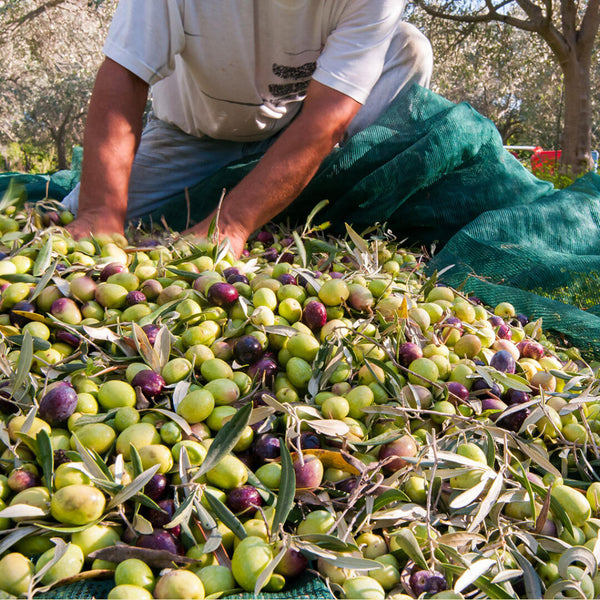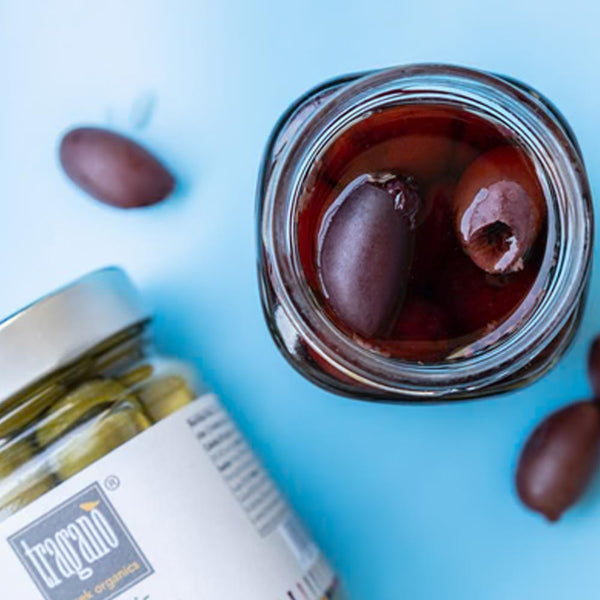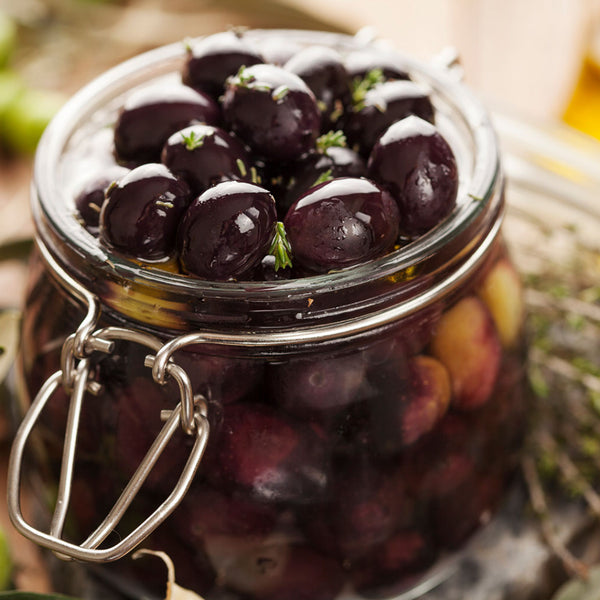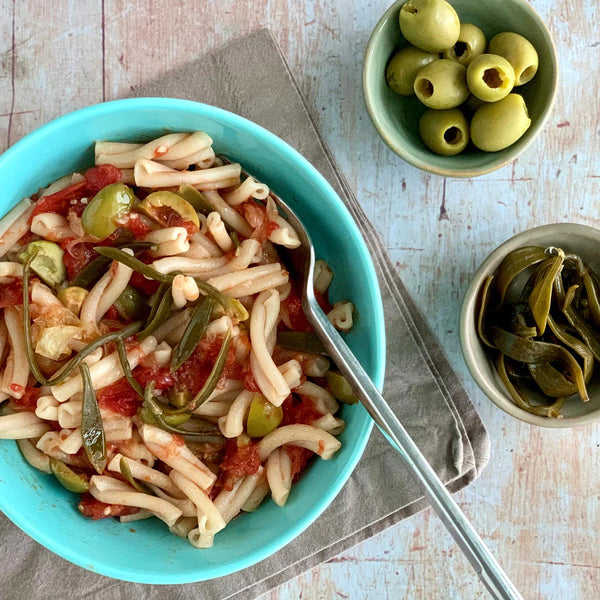Experience Greece: Food, Culture, Hidden Gems & Inspiring People!
Experience Greece: Food, Culture, Hidden Gems & Inspiring People!
ABOUT US
The Zelos Guide to Olives
5 min read

Our favorite guest blogger, Jean Fleming, tells us of her own journey into the wonderful world of olives. From the mythology to tasty recipes, Jean will have even the most sceptical shopper convinced to try this little gem of the Mediterranean Diet!
True confession: before I moved to Greece from America, I did not like olives. They were too salty, too squishy, the leftover topping on the nachos that no one wanted to eat. Not good. That all changed when I landed in the heart of Kalamata olive country in Greece, where some of the best olives in the world are grown, brined, and served with love. Now I am a believer. So, whether you're a devoted olive aficionado or just beginning to explore the many flavors and textures that olives offer, this overview will get you on the right path toward a delicious part of your Mediterranean diet.
Greek Olives: Marvelous mythology surrounding a key crop
Olives love the Mediterranean climate of Greece, and have been cultivated here for over 6,000 years. They have a special place in Greek history, too. In fact, the city of Athens got its name because of the olive tree. Ancient Greece’s most important city did not yet have a name, so the citizens cooked up a little friendly competition between the gods to resolve the problem. Poseidon, god of the sea, was eager to get some land associated with his dominion, so he offered a waterway that would supply the city with fresh water. Athena, goddess of wisdom, warfare and handicrafts, bested him by bestowing them with olive trees, full of delicious, useful olives. From then on, the capital of Greece is named for this wise and generous goddess.
Today, there are more than 60 registered varieties of Greek olives, but estimates of the true diversity go much larger. And with over 130 million olive trees across the country, you will find enough regional cultivars and recipes to keep you busy and well fed for years.
Different olive varieties and their characteristics
There are 139 different varieties of olives, grown across 23 countries around the world. Table olives – those we eat instead of pressing into oil – have their own unique characteristics and flavor profiles. Let's explore some of the most popular varieties and what sets them apart.
Greek Olive Varieties

- Kalamata: Large and dark purple in color, Kalamata olives offer a smoky taste that is not bitter. Though they might look similar, they do not taste anything like large California Mission olives. Harvested in late autumn, at the peak of ripeness, they are wonderful as table olives or in blended into tapenades.
- Halkidiki: These green olives, also spelled Chalkidiki, are grown in northern Greece, near Mt. Athos, and harvested while still young in November and December. They are known for their acidic flavor.
- Koroneiki: While these small green olives are grown in many parts of Greece, the island of Crete is especially renowned for them. Though they are usually used to make olive oil, they also make delicious table olives.
- Manaki: These olives grow well at higher altitudes, making them well suited to the terrain of Argolida, in the Peloponnese. They mature later than most and are harvested in January and February. Manakis make great olive oil or table olives, with a slightly sweet flavor and soft flesh.
Non-Greek Varieties
- Castelvetrano: This bright green Italian olive is picked young and offers a mild, buttery flavor. They've become quite popular in the US.
- Niçoise: Grown in the Alpes-Maritime region of France, which includes Nice (hence the name), these black olives offer a bitter, nutty flavor. They are mostly sold domestically in France, though.
Olive curing methods
All olives are bitter when harvested. Don’t try eating them straight from the tree! To become edible, table olives go through a curing process that transforms that bitterness into deliciousness. There are many different methods, but all transform the olive’s natural sugars into lactic acid, in a kind of fermentation process. Here are some of the methods:
- Brine: Salt water, often combined with wine or wine vinegar and herbs, is a traditional method – used by Tragano Greek Organics to cure their Kalamata and Halkidiki olives – that yields rich flavors. My neighbors in the Peloponnese swear by this method, with their own proprietary recipes.
- Water: A slow, painstaking method is to soak, rinse and repeat in water. More common is to start this way and then move olives to a salt water brine.
- Lye: A popular method with large commercial olive purveyors, in this method olives are soaked in a vat of alkaline lye solution. This can impact the flavor and texture of olives, and leave a bitter aftertaste. It's definitely not the preferred method among artisanal olive mongers.
- Dry curing: After packing the olives in salt, they are left for a month or more while the salt pulls out the bitterness. Afterwards, the olives may be bathed in olive oil. This process results in a deeply concentrated flavor and some people rinse the olives before eating.
Olive pairings and recipes
With expensive olive plates starring on restaurant menus, it’s no doubt that olives have arrived as an “it” food. Yet olives are versatile and can be paired with a wide range of flavors, or added to recipes for a piquant touch.
Add olives to your charcuterie and cheese boards. More savory olives pair well with aged cheddars, while the smoky varieties can stand up to the strongest cheeses on the board. When pairing with wines, Kalamata olives beg for a hearty red wine, while vibrant Halkidiki or Castelvetrano like a crisp white.
And forget about those old nachos. Olives cook well, as these recipes demonstrate:
- Pasta lovers will enjoy this Greek riff on pasta puttanesca, made with striftaria pasta, green olives and sea fennel.
- The baked fish dish, plaki, gets an update in this modern take on a Greek classic.
- A classic Greek salad wouldn’t be complete without olives – and all the other ingredients that make this a delicious favorite.
Tips for selecting olives
Sure, I might be biased, but Greek olives combine the best that the fruit has to offer. Look for those with Protected Designation of Origin (PDO) designation – the European Union’s way to designate special agricultural areas. Kalamata and Halkidiki both have this designation. It’s a way of ensuring you’re getting the real taste, while supporting the farmers who work in those regions.
In Greece, you can visit any farmers market to find local olives cured in a variety of brines. But when you can’t be here, jarred olives will give you the taste you crave. Tragano Greek Organics is now in its third generation as a family-run business, and they are committed to sustainable, organic practices. They offer Kalamata and Halkidiki olives, jarred and pitted. Both are hand picked and brined with only pure water, sea salt, and spices selected to enhance the natural flavor of the fruit.
We hope you now have a deeper understanding of the different olive varieties, their unique characteristics, and how to enjoy olives as a delicacy you can enjoy every day.
Buy Organic Greek Olives from Zelos Greek Artisan
Leave a comment
Comments will be approved before showing up.
Like what you read? Sign-up for more & get 15% OFF!
Sign up for our newsletter and get 15% OFF, plus the best Greek recipes, uncrowded and unspeakably cool destinations in Greece, and the newest offerings from our amazing Artisans.








